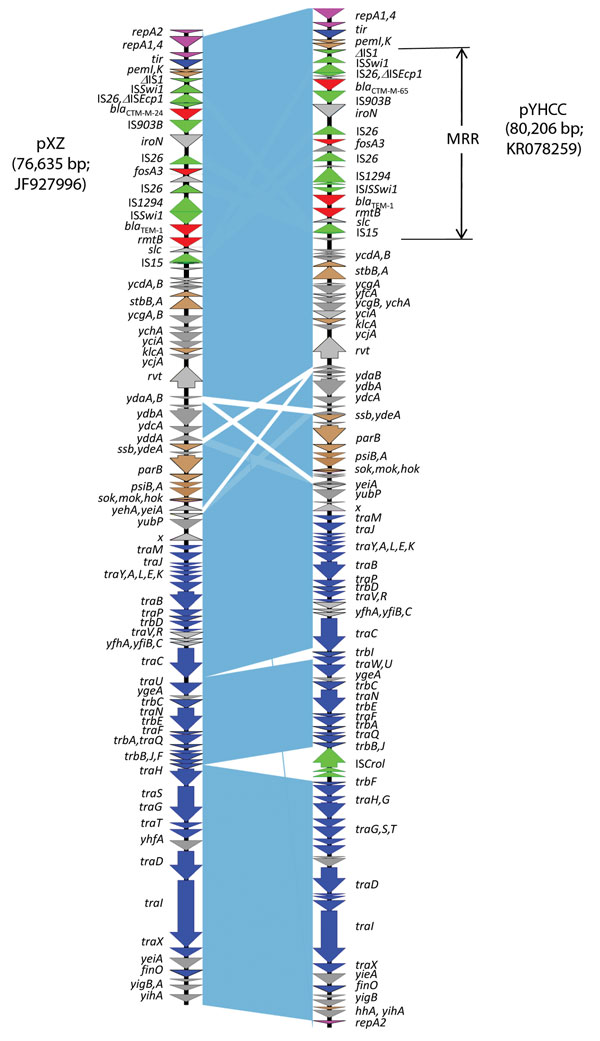Volume 21, Number 11—November 2015
Dispatch
Fosfomycin Resistance in Escherichia coli, Pennsylvania, USA
Figure 1

Figure 1. Comparative analysis of fosA3-carrying IncFII plasmids pYHCC with pXZ. Open reading frames are indicated by arrows and colored according to their putative functions: magenta arrows indicate genes involved in replication; blue arrows indicate genes associated with plasmid conjugal transfer. Brown arrows indicate genes involved in plasmid stability; red arrows indicate antimicrobial drug resistance genes; green arrows indicate accessory genes of mobile elements; gray arrows indicate other backbone genes and inserted foreign genes. Light blue shading indicates shared backbone regions with a high degree of homology. MRR, multidrug resistance region.
Page created: October 19, 2015
Page updated: October 19, 2015
Page reviewed: October 19, 2015
The conclusions, findings, and opinions expressed by authors contributing to this journal do not necessarily reflect the official position of the U.S. Department of Health and Human Services, the Public Health Service, the Centers for Disease Control and Prevention, or the authors' affiliated institutions. Use of trade names is for identification only and does not imply endorsement by any of the groups named above.